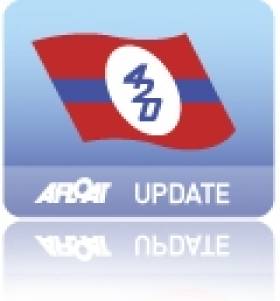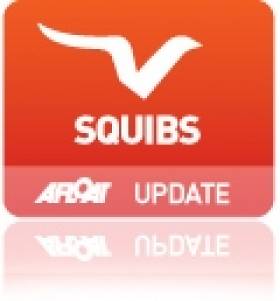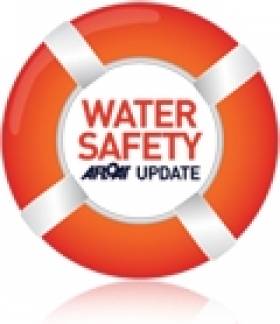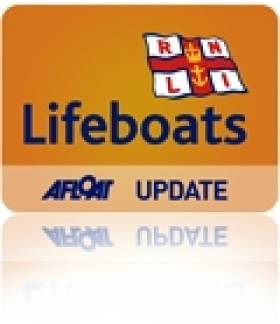Displaying items by tag: Howth
Howth Yacht Club Pair Win Munster 420 Title
#420 – The 420 Munster Championships in Dunmore East was sailed with a fleet of nine boats. The sailors enjoyed a fantastic weekend sailing alongside Fireballs and Flying 15s under the watchful eye of Race Officers Con Murphy and Cathy McAleavey at Waterford Harbour Sailing Club.
Dougie Elmes/Colin O'Sullivan finished the series with six race wins to take first place in the gold fleet. Despite some close finishes Lizzy & Cara McDowell were unable to break the boys domination at thee front of the fleet, but they finished with five seconds to secure second place in the Gold Fleet. Bill Staunton sailing with James McCann from RCYC completed the podium places.
Shane McLaughlin/Tim Coyne saw all their hard work training over the winter pay off when they secured first place in the Silver fleet. They were followed home by the fast improving Alex & Jamie O'Grady in second place.
Howth Yacht Club was represented by nine sailors at the event.
#Howth - Paid parking at Howth Harbour is still on the table as a part of a review of traffic management and income generation at Ireland's fishery harbour centres, as The Irish Times reports.
Responding to a question from Senator Averil Power, Minister of State for the Marine Tom Hayes told the Seanad that Howth is one of a number of harbours under review and that "there is a broad range of other factors to be taken into account before a final decision will be made on the matter."
The story comes back into the news more than two years after local traders and stakeholders organised their opposition to proposals by the Department of the Marine to bring in charges for many of the 500 parking spaces available in Howth, citing the potentially damaging effects on the village economy.
Minister Hayes said this week that the harbour's safe operation was his department's priority, claiming that "traffic management and parking is recognised as an issue, particularly though not exclusively during the busy holiday periods."
That is despite then Howth Yacht Club Commodore Breda Dillon rejecting such an assessment in early 2013, saying that that on normal days there was only 10% occupancy of parking spaces on the middle pier.
Paid parking across the Bay continues to be a bugbear – especially for sailors transporting equipment from car to boat – at Ireland's biggest sailing centre at Dun Laoghaire where the harbour company operates a clamping policy.
#squib – The top Irish Squib at the National Squib Championship is sixth place Aficionado, sailed by John Driscoll and David Cagney. A further two great races were sailed off Howth today. In race one, sailed in tee-shirt conditions the wind was about 9 knots and the ebb tide had just started- and was pushing the fleet over the start line. After one general recall the race was up and running. Much of the fleet opted for the pin end of the line where the tide was slightly stronger. However, the waves were choppier, which slowed the progress of the Squibs. However the boats with the skill in negotiating waves reached the windward mark first. Nigel Harris and John Stephenson in Banshee from South Caernarvonshire Yacht Club lead around the windward mark. This race was a windward leeward race with three beats. They were able to sail a conservative race and held the fleet at bay. The crews found the running legs very long due to nosing the tide. Some boats opted to sail the angles while others sailed the rhumb line which put them at a small advantage. Over the race the wind strength was increasing progressively. At the finish the placings were:
1st. Banshee, 65, Nigel Harris and John Stephenson. SCYC
2nd. Ric-O-Shea, 136, David Jones and Mark Hogan.SCYC
3rd. Lady Penelope, 819, Malcolm Hutchings and Andy Ramsay. RCYC
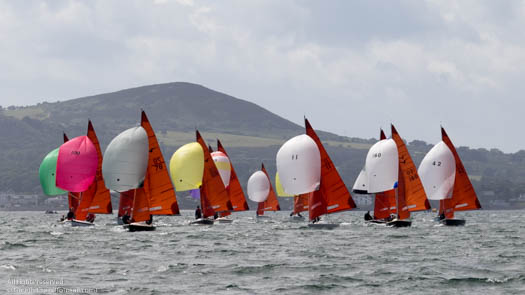
By race two the wind had increased to about 14 knots which was a challenge to those crews who needed to adjust their rig settings for the stronger wind. Again after one recall the fleet started under a 'U' flag which is like a black flag but less penalizing. Again the fleet had to decide between choppy water and a favourable tide, or calmer waters and slightly less strong tide. At the first windward mark Nigel and Jack Grogan in Helmut Shoing II had pulled out a lead of more than 10 boat-lengths. This time the race was on a triangular course. The leaders, unlike their performance yesterday, sailed a faultless race. It was a long race with four beats with a wind which increased to 25 knots at times. Unlike yesterday the wind was quite steady, and did not offer the snakes and ladders opportunities which existed yesterday. As the wind increased, the offwind legs it presented huge challenges to the crews who were not prepared for it.
Helmut Shoing won the race. At the finish the results were:
1st. Helmut Shoing II , 105, Nigel and Jack Grogan.
2nd. Ric-O-Shea, 136, David Jones and Mark Hogan.
3rd. Lady Penelope, 819, Malcolm Hutchings and Andy Ramsay.
At this stage there have been three different race winners, so what is the overall position?
1st. Ric-O-Shea, 136. 5 points.
2nd. Lady Penelope, 819, 8 points.
3rd. Helmut Shoing II , 105, 14 points.
4th. Banshee, 65, 14 points.
Top Irish boat is 6th place Aficionado, sailed by John Driscoll and David Cagney.
Top lady, in race 2 and 3 was Pamela Phelan in Squib.
Special mentions goes to Megan Pascoe and Hannah Stodel from Weymouth Sailing Club in Squibble who now lie in 24th place in the series. Megan and Hannah are 'Special Athletes' who have overcome their severe handicaps to compete on an equal footing with able bodied male athletes in this elite fleet.
Racing continues tomorrow.
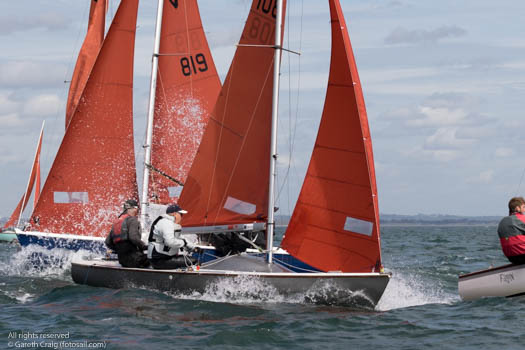
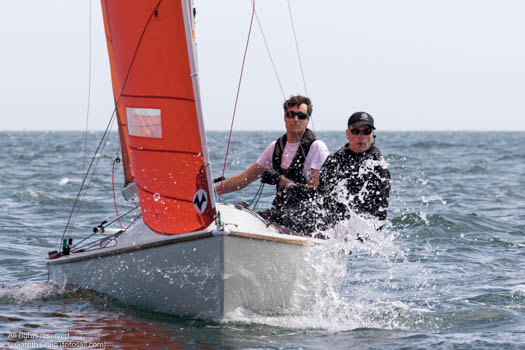
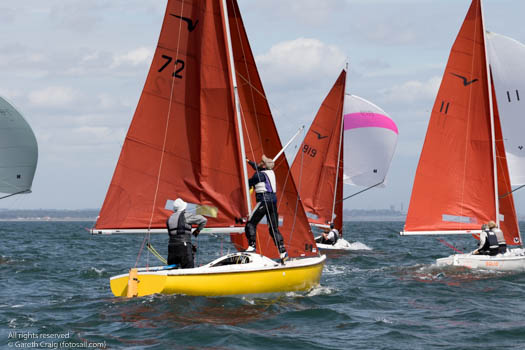
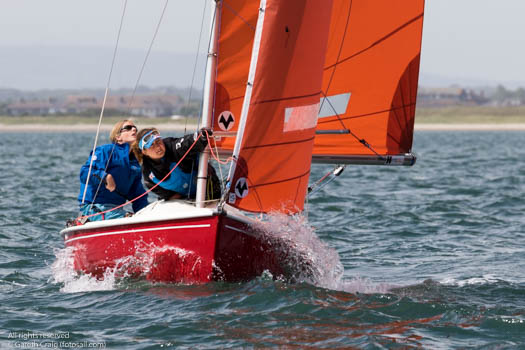
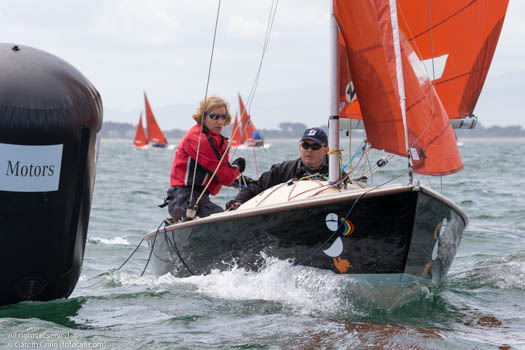
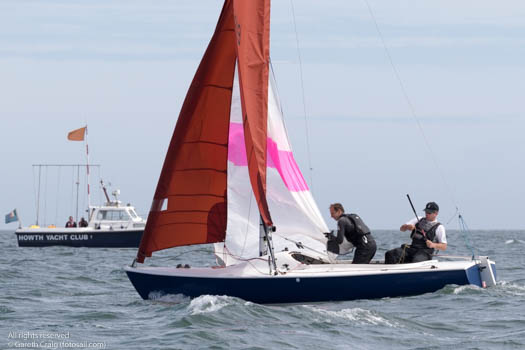
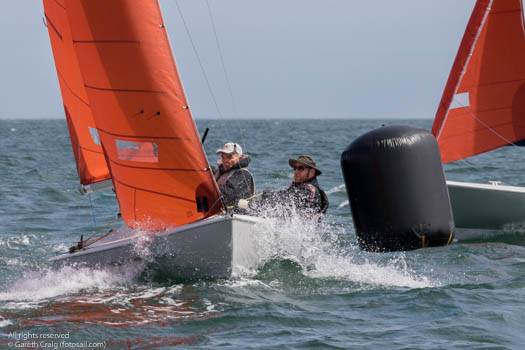
49 Squibs Start Nationals At Howth In Shifty Breeze
#squib – Despite a weather forecast of 30 km/hr winds, the National Squib Championship started today in Howth, County Dublin, Ireland, in ideal sailing conditions with sunshine and 10-16 knots of offshore wind blowing off Portmarnock beach. Having enjoyed several practice starts with a favourable flood tide, the fleet of 49 Squibs got away cleanly without any OCS victims.
The wind held plenty of surprises for the competitors. On the first beat which was more than a mile long, and the wind at the stronger end of the cycle, the wind flicked left which provided a 'get out of jail free' card to the competitors who headed to the port side of the windward leeward course. Some competitors took on board the information 'left is good'. This turned out to be a flawed piece of information. At the fist windward mark many of the top boats found themselves to be placed in the late teens or early twenties, this included David Jones and Mark Hogan from South Caernarvonshire Yacht Club in the immaculately prepared 'Ric-O-Shea', and Gerard Dyson and Tony Saltonstall from Royal Yorkshire Yacht Club in 'Alchemy'. Were they destined to remain in the mid- fleet? The answer was no.
On the first run there were very few place changes, behind Nigel and Jack Grogan from Royal Corinthian Yacht Club in 'Helmut Shoing II' who held a short lead from a tightly bunched group of Squibs behind. On the second beat the 'left option' was again good, and resulted in a shake up of the mid-placings. Again the offwind leg produced few changes.
By the third beat David Lovegrove the experienced Howth based O.O.D. had moved the windward mark to towards south. The wind continued to flick back and forth and to produce changes in strength. This time the wind favoured the boats which went right on the beat. Was it a tide issue or a wind issue. Popular opinion says that everything hinged on the changes in the wind direction. At this stage the competitors knew which way to go! Or did they?
On the final beat with the ebb tide decreasing in strength it paid to go hard right.
This left the Squibs only a run back to the leeward gate and a sharp turn to the finish line. 'Helmut Shoing II' had built up a 5 boat-length lead. All they had to do was sail the course and finish. Unfortunately, in the belief that they had another lap to complete, they gybed towards the right hand leeward mark, only to find that the other competitors had taken the left hand mark and crossed the finish line ahead of them.
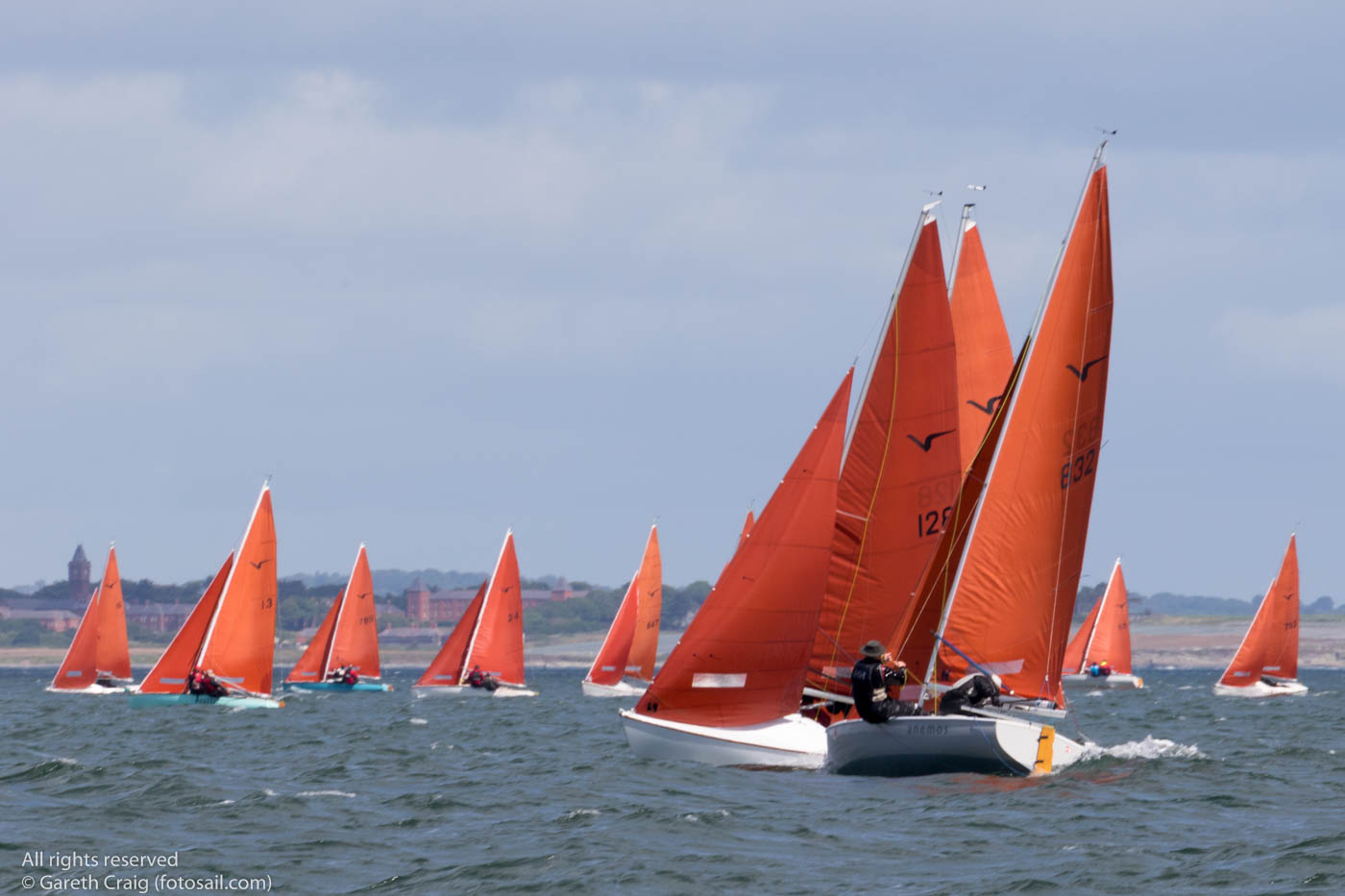
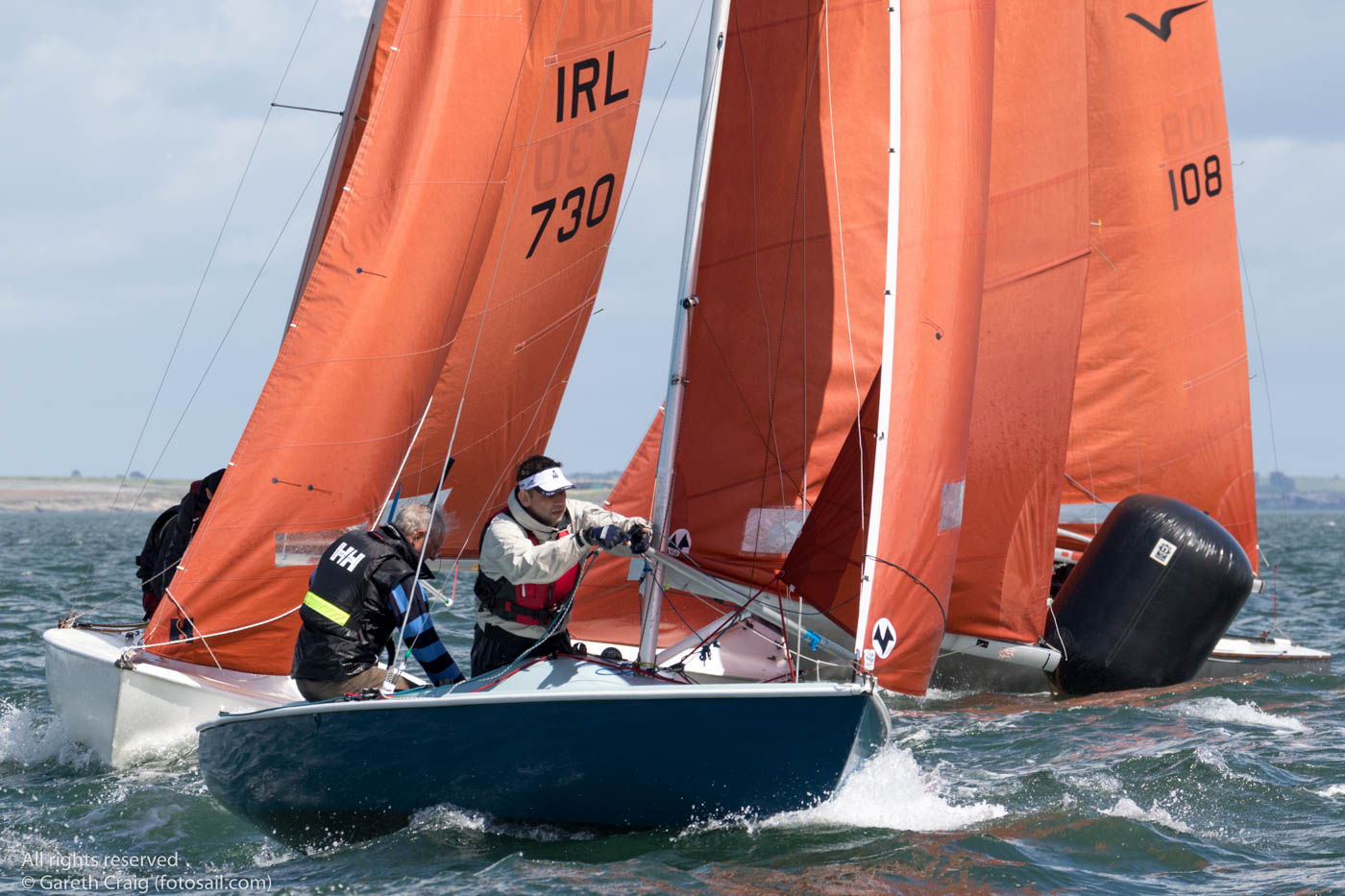

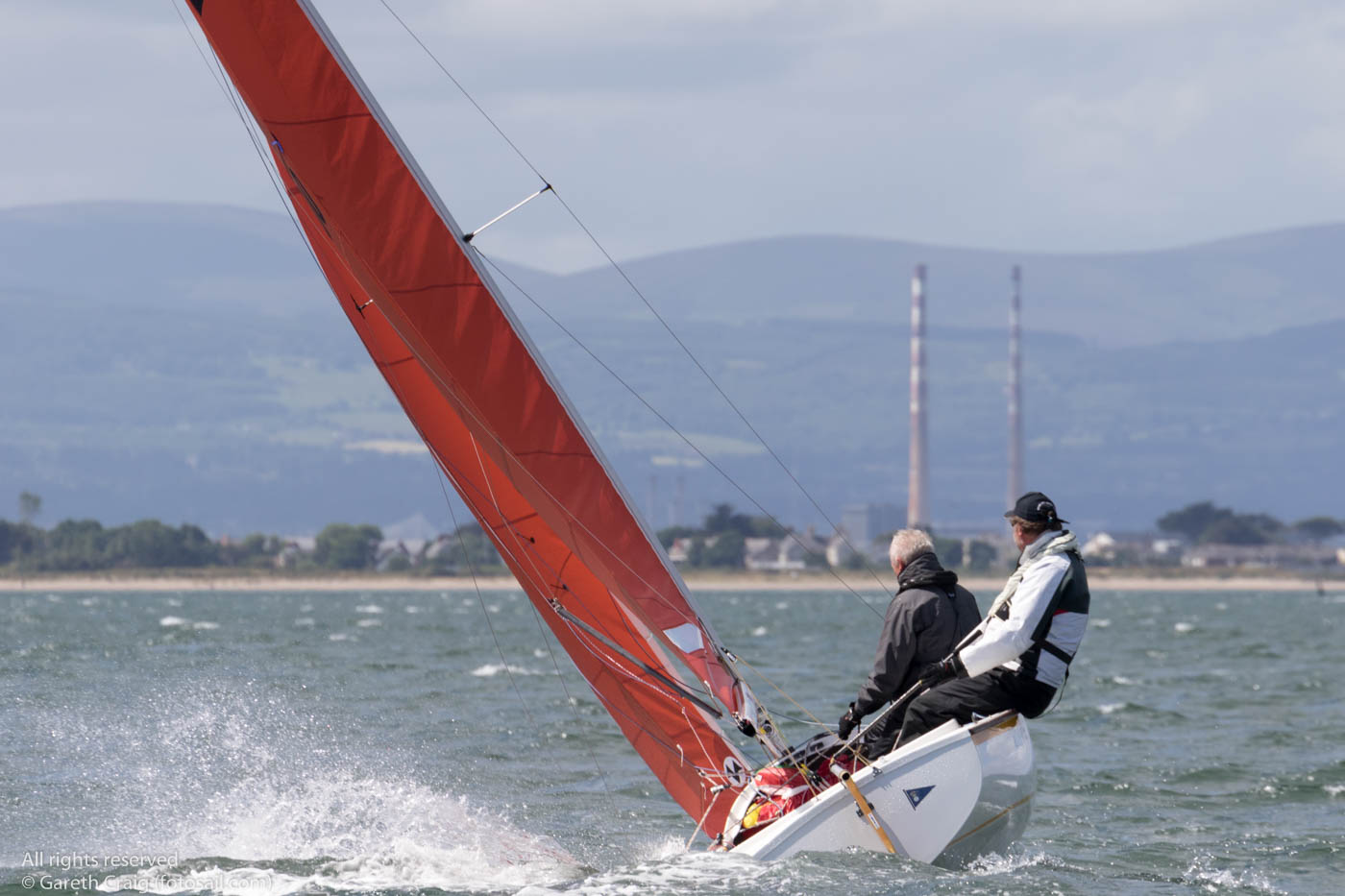
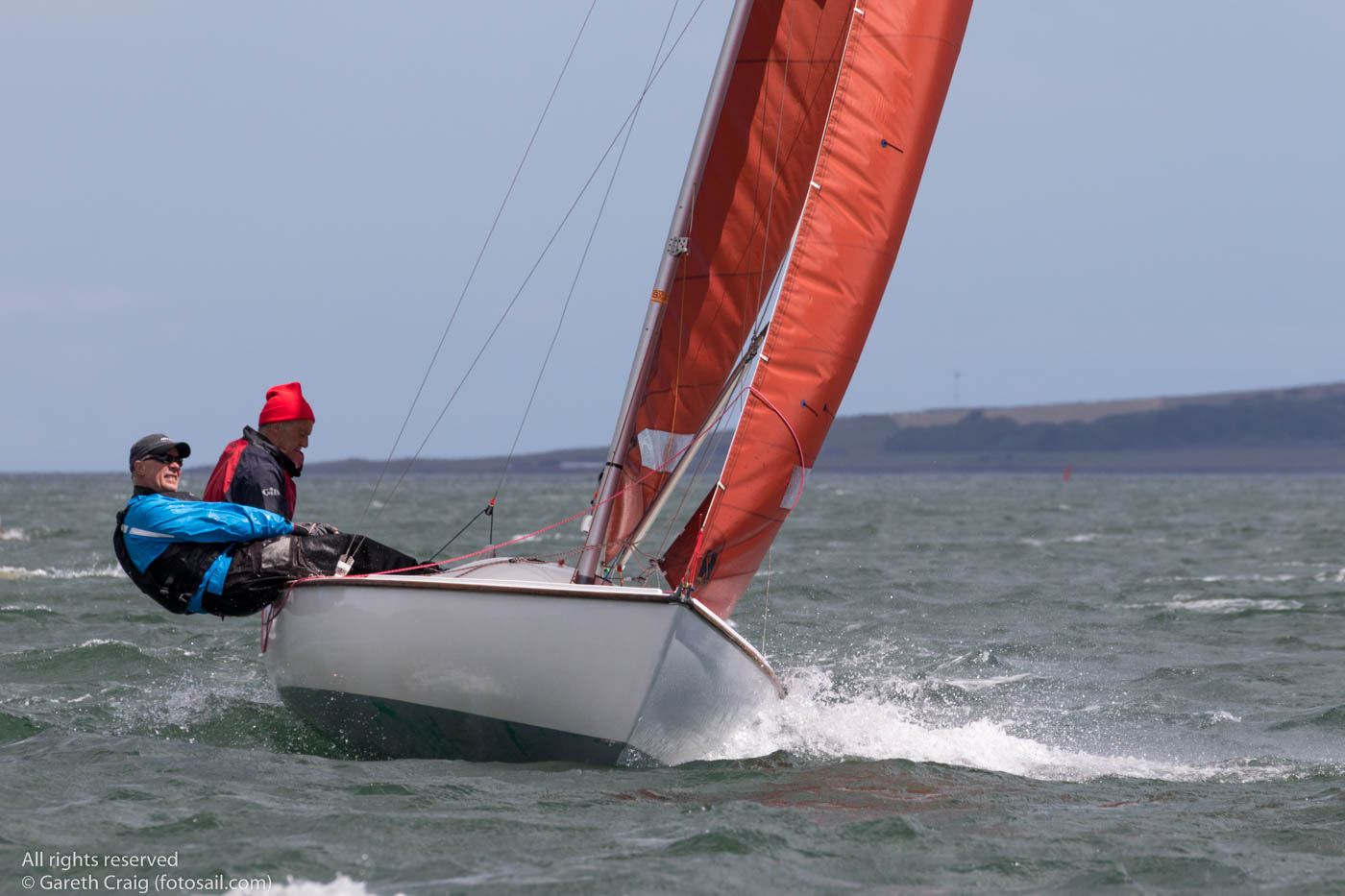


The results were:
1st. 'Ric O Shea', 136, Davy Jones and Mark Hogan.
2nd. 'Lady Penelope', 819, Malcolm Hutchings and Andy Ramsay.
3rd. 'Pani Munta' 128, Mike Probert and Richard Delves.
First Irish boat: 8th. 'Afficianado', 78, John Driscoll and David Cagney, Royal North of Ireland YC.
11th. 'Anemos', 832, Pete Evans and Conor O'Leary, Royal St. George Y.C.
First lady: 23rd. Sarah Holdstock crewing in 'Aquabats'
Howth Coast Guard Rescue Cliff Path Faller
#Coastguard - Howth Coast Guard were tasked yesterday (Tuesday 16 June) at 4.15pm to an initial report of a faller on the cliff path at Howth Summit.
When a coastguard member arrived at the reported scene, he could find nobody requiring assistance.
However, just at that time a second call came through to Dublin MRCC informing that a person had fallen at the cliffs at Balscadden, and that the original caller had been mistaken in their 112 call location.
The team assembled and went to Balscadden car park. On searching they found a person that had fallen about 10 metres to the bottom as they were ascending the cliff path and was in need of immediate medical attention.
Howth RNLI's inshore lifeboat was requested to launch immediately by the coastguard to provide further assistance to the rescue efforts.
A secure cliff line was set up and four members of the coastguard team, one of them an emergency medical technician, were lowered to the position at the bottom of the cliff.
Along with the lifeboat members, they gave medical assistance and prepared the casualty for stretcher transfer to the awaiting lifeboat.
The casualty was stabilised on scene and transferred back via the lifeboat to the RNLI station in Howth Harbour, where a HSE ambulance crew took over.
Howth RNLI adds:
Howth RNLI inshore lifeboat launched at 4.50pm Monday 16th June to assist Howth Coast Guard in the rescue of a young girl who had fallen approximately 10 metres in the vicinity of Pucks rocks, Howth head.
Howth RNLI launched inshore lifeboat to assist a rescue team from Howth Coast Guard who has already located the female casualty who had fallen in the vicinity of Puck's Rocks Howth head and was in need of immediate medical attention.
A Coast Guard Emergency Medical Technician gave medical assistance and prepared the casualty for stretcher transfer to the awaiting lifeboat.
The casualty was stabilised on scene and transferred back via the inshore lifeboat to Howth Harbour. The casualty was taken by ambulance to hospital and treated for a leg injury and concussion.
Tom Ryan, inshore lifeboat helmsman said "The young girl fell on recently collapsed old concrete footsteps and we would advise any walkers in the area to be vigilant in the area of Pucks Rocks"
#WaterSafety - Families were spotted risking their lives on Howth's exposed harbour walls in recent stormy weather conditions.
TheJournal.ie reports with photos of some parents with children as young as toddler age frolicking under the waves as they crashed over the fishing village's east pier – oblivious to the danger of being knocked over and swept into the cold harbour waters.
In January last year a man was lucky to escape with just an ankle injury when he was swept by a wave from the upper portion of the same wall to the lower section 10 feet below.
Yet despite repeated water safety warnings and appeals from the likes of Irish Water Safety, many persist in defying the risks – such as this family photographed at Bullock Harbour in February 2014.
Howth RNLI Lifeboat Tow 32ft–Sailing Vessel to Safety
#lifeboat – Howth RNLI all weather lifeboat launched at 4.00pm this evening to reports of a 32ft–sailing vessel with engine problems in the vicinity of the Baily lighthouse. The casualty vessel was located and towed to the safety of Howth marina.
The RNLI lifeboat pagers sounded at 3.45pm on the afternoon of Friday 24th April 2015 and Howth all weather lifeboat launched to reports of a sailing vessel with 2 people aboard drifting with no propulsion in the vicinity of the Baily lighthouse.
The vessel was quickly located and taken in tow back to Howth marina. The casualty vessel's engine had failed and she was not able to use her sails.
Weather conditions gave moderate visibility due to cloud and light rain and a force 3 to 4 southerly wind.
Howth RNLI Coxswain Fred Connolly said: 'We were pleased to have been able to respond, launch and locate the vessel so quickly. It is quite common unfortunately at this time of the year to see quite a few mechanical problems occur on vessels after t
Dublin Bay Prawn Festival Gets Under Way
#MaritimeFestivals - The annual Dublin Bay Prawn Festival kicks off this evening (Friday 24 April) with the 'mystery dine-around', heralding a weekend of food and fun in Howth.
Whatever way you like your prawns – barbecued, whole, shelled, fried, skewered, marinated, sauced – Howth’s many award-winning restaurants will serve your favourite prawn dishes in bite-sized portions at the food village.
But around that focal point is a whole host of activities, including a funfair, live music and the vibrant village market.
Plus Howth's coastguard and lifeboat stations will be among the local institutions open on Saturday 25 and Sunday 26 April, educating on their invaluable water safety work.
Howth RNLI Lifeboat Rescue Dog on Sandbank From Rising Tide
#rnli – Howth RNLI inshore lifeboat launched at 9.55pm yesterday evening to reports of a man and his dog in difficulty after being cut off by the rising tide on a sandbank opposite Burrow Beach in Sutton. The man swam safely to shore and the volunteer lifeboat crew rescued the dog and returned him to a very grateful owner.
The RNLI lifeboat pagers sounded at 9.50pm on the evening of Monday 20th April 2015 and Howth inshore lifeboat launched to man stranded with his dog on a sandbank adjacent to Burrow beach in Sutton.
The lifeboat crew discovered that the man had swam to shore and was being attended to by some locals who had heard his shouts.
The weather conditions were good as it was a clear dry night and visibility was excellent. The volunteer lifeboat crew of Declan McManus (Helm), Joss Walsh and Killian O'Reilly located "Putóg" a 4 year old Golden Retriever and returned him to his very grateful owner.
Howth RNLI Helmsman Declan McManus says: 'We were pleased to have been able to respond and launch so quickly. We urge people to be aware of their surroundings and check local tide times as a fast rising tide can catch people out in that area."
#rnli – On Monday broadcaster Gay Byrne officially opened the Howth Horizons exhibition of photographs taken by John McColgan, the multi-award winning director and producer of Riverdance. The exhibition runs until 20th April at The House restaurant in Howth. All proceeds from the sale of the photographs will go to Howth RNLI.
John McColgan commented,'Photography is a long-held passion of mine. This is my first photographic exhibition, and I feel deeply gratified and grateful for the positive response I've received for my work. I knew that my family and friends would be supportive, and it means a lot that others appreciate the images I've created too. I'm delighted that the sale of the photographs will benefit Howth's lifeboat crew in their efforts to save lives at sea.'
McColgan was joined by friends and family to celebrate the opening of the exhibition, including his partner Moya Doherty, Gay Byrne, Kathleen Watkins, Ian Dempsey, Joe Duffy, Gary Cooke, Eamonn Quinn and Karla Elliot.
Opening the exhibition, Gay Byrne talked about his happiness at being back in Howth where he had lived for 35 years and said, 'Nobody who lives in a fishing village anywhere in Ireland can have anything other than huge admiration and pride in the people who run the lifeboats. There is a memorial on the pier to those who sadly lost their lives at sea, but there is no list of all the many people rescued who owe their lives to those who man the lifeboats. When myself and Kathleen lived here we often heard the impressive sound of the lifeboat going out on exercise or on a rescue.'
A keen photographer himself, Byrne also praised McColgan's talent as a photographer saying,' John has taken photography to the next stage. He has the eye of a true artist, he has the ability to see things in a different way. You don't have to travel very far to capture beautiful pictures if you have the ability and the creativity.'
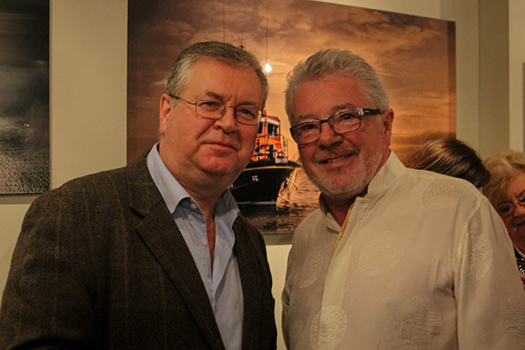
Joe Duffy and John McColgan
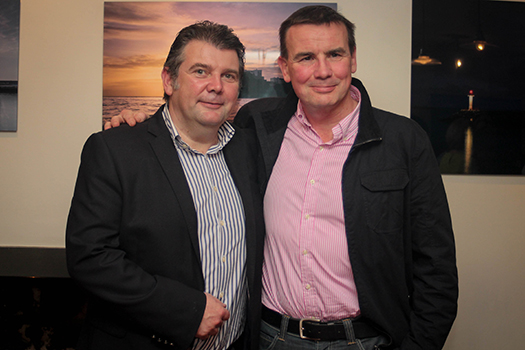
David and Terry Boyle

Stephen Harris, Russell Rafter and Fred Connolly
Rose Michael, Howth RNLI Fundraising Chairperson said, 'We are honoured that someone of John's calibre would choose to donate the proceeds of his very first photographic exhibition to Howth lifeboat. As a charity we are totally dependent on the generosity of people like John, to raise funds to pay for the continued training of our volunteer crew, their kit and the upkeep of our lifeboats. We greatly appreciate the time, thought and effort that has gone in to these beautiful photographs. We hope that they will be treasured and passed down through families as heirlooms for generations to come.'
For more information click here


























